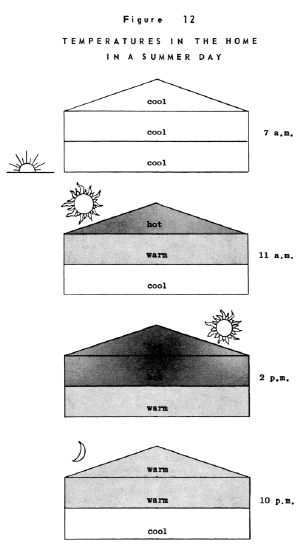How to Really Save Money and Energy In Cooling Your Home
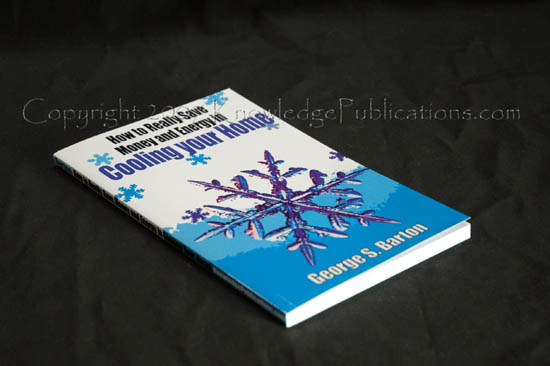
How to Really Save Money and Energy in Cooling Your Home $17.95
How to Really Save Money and Energy in Cooling Your Home is a great three part guide to low cost home cooling!
This book covers EVERYTHING you have NOT HEARD of for cooling your house. The illustrations simply and easily convey to you HOW your house gets hot and HOW to keep it from getting hot. The best way to keep a house cool is to keep it from getting HOT! You will slap your forehead in amazement at how easy and simple it is to keep your house cool via proper ventilation and other methods. THIS *IS* the stuff that builders and contractors DO NOT DO. Don’t think that because you have a “Ridge Vent,” that's as good as it gets. This book will save you MONEY on your AC BILL faster and quicker than anything else you have seen. If you are one of those $250+ a month Summer AC bill people, GET THIS BOOK.
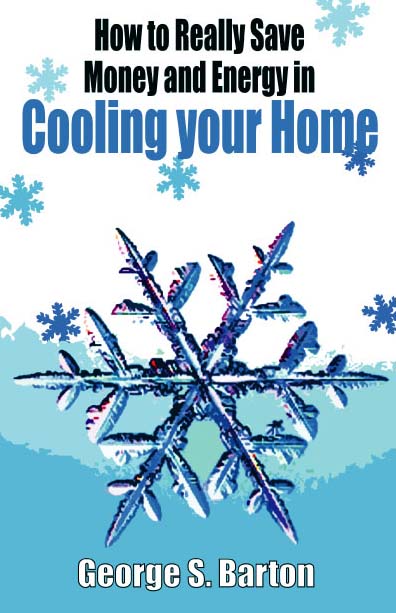
The cost of energy directly impacts how we think about heating and cooling our homes. The cooling of homes is accomplished today almost exclusively by means of electric air conditioning. Just like virtually every other modern process or activity, air conditioning is being called upon to contribute its share of improvements in efficiency to alleviate the cost of operation.
Many homeowners have done what has been preached so profusely: insulate, insulate, insulate. Some progress has also been made in the efficiency of air conditioners. Yet, homeowners continue to be faced with skyrocketing air-conditioning bills. It almost appears as if in the future the choice will be either to accept, afford, and pay for astronomical electric bills, or sacrifice comfort. However, this is not so for Knowledge Publications customers.
>Yes, air conditioning will continue to be the basic tool utilized to cool homes.
>Yes, electric rates are climbing and will continue to do so. We cannot eliminate entirely the air conditioner, nor can we instantly stop the increase in electric rates by some energy trick.
There is a different way to substantially reduce the workload on air conditioners, thereby reducing electricity consumption, without any sacrifice in comfort. Via reading How to Really Save Money and Energy in Cooling Your Home you will learn why current methods of cooling are wasteful, and why conventional measures to save energy are mostly cosmetic. You will see a clear description of the principles and practical techniques of a method totally different from what you are using now.
This book WILL enable you to SAVE a substantial portion of your home-cooling costs. This is the reason for the "REALLY" in the title.
Contents Of The Book
PART ONE: THE PROBLEM
1. Climate and the Human Being
2. Climate in the United States
3. Population Shifts
4. Cooling and Energy
5. Conventional Energy-Saving Tips
6. Energy Supply
7. What do You Pay for Electricity
8. How to Build a Graph
9. Figure Your Cost
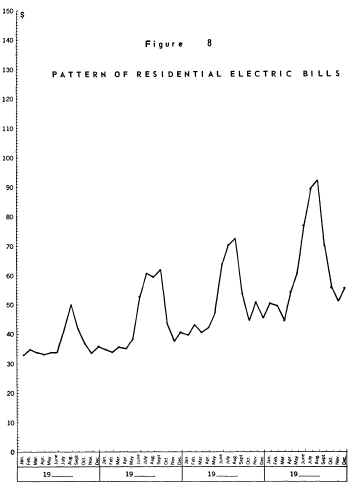

Figures 7 and 8 were built following exactly the directions in Section 8. These are typical shape curves for a home with electric air conditioning but fossil-fuel (gas or oil) heating. Of course, the level of the curves may be higher or lower depending on the size of the house, number and type of appliances, percentage of time used, etc. But you should be able to draw "base lines" as shown, averaging the usage during the months that the air conditioner is NOT used. This base line will tell you what your usage of electricity is for operating lighting, the washer, dryer, tools, etc.
Part Two: The Basics
11. Transmission of Heat
We know that a house may be pleasantly cool in the early morning hours of a summer day, but, as the temperature increases during the day, somehow heat comes from the outside of the house to the inside. This happens even if all doors and windows are kept tightly closed (Figure 12). What air conditioning does is simply to reverse the process, and make the heat go back from the inside of the house to the outside. Heat transfer, any heat transfer, really is the migration of heat from a warmer place to a cooler place. Note that we purposely use a comparative word, warmer or cooler, not hot or cold, because in heat transfer we are always dealing with relative conditions of temperature. Even a place which is "cool" by one standard, will appear "warm," if we compare it with another place which is at a much lower temperature.
12. Radiation
13. Conduction
14. Convection
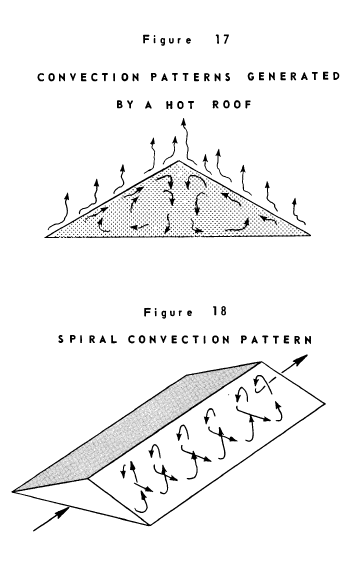
Specifically in the case of a house, the most important type of convection heat transfer can be seen in Figure 17. This represents a cross-section of a gable roof, where the heat absorbed from solar radiation sets in motion currents of air surrounding the house following the patterns shown by the arrows. Inside of the roof, that is, in the attic, convection also occurs as shown by the closed loops. The inner surface of the roof acts as the heating element and the air keeps circulating, transferring heat to the attic floor (ceiling of the upper living area) as long as there is a supply of heat through the roof.
Convection is a relatively inefficient form of heat transfer, but, as with the other modes, the rate will increase as the difference in temperature between the warmer place and the cooler place increases. This is certainly so in the case of a hot roof in the summer.
One reason why convection is widely used is that a rapid change of temperature may be obtained if the fluid (liquid or gas) is moved vigorously enough. The trouble is that moving fluids is itself a process that requires considerable amounts of energy. Moving air in an air-heated house requires a good-sized fan. Moving air in an attic, through an attic fan, also requires a powerful motor. An additional problem of the attic fan is that the forced convection that it creates from one end of the house to the other combines with the natural convection shown in Figure 17 to create the spiral pattern (Figure 18), effectively improving the contact between air, the inside surface of the roof, and the floor of the attic. The result is more heat transferred, not less. Of course, as the superheated air is expelled from one end, more outside air at lower temperature comes in; so that, overall, there is some cooling effect. However, this small help does not come cheap.
15. Color
16. Solar Energy
17. Sensible vs. Latent Heat
18. Atmospheric Humidity
PART THREE: THE SOLUTION
19. The Solution is LEC
20. Distribution
21. Regulation
22. Cost
23. The Attic Fan
24. Test House
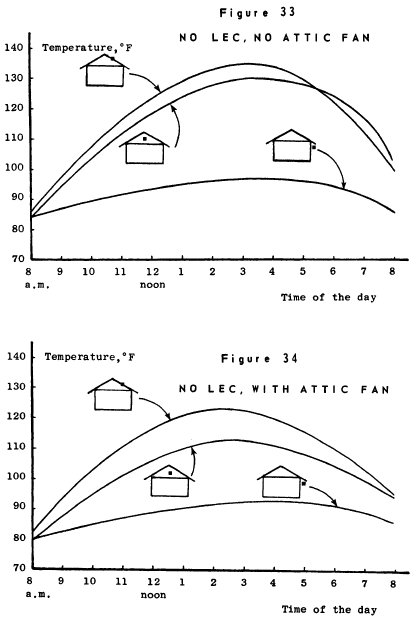
In Figure 33, showing the temperature for the conditions of no LEC and no fan, we can see clearly the tremendous heat buildup in the roof, and, slightly lower, the attic air. Both are much higher than the outside temperature. Note that when the sun goes down, starting at about 6 p.m., the roof cools faster than the attic air. This is simply because the roof, being a good absorber of energy, is also a good emitter. Once the external source of radiation decreases in intensity (sun going down), the emission takes over. Air, on the other hand, is slow to get heated and slow in giving up this heat.
Figure 34 shows the temperatures with no LEC, but with the attic fan on. The result is clear: the temperature in the attic does not get as high as in Figure 33, and since the air is renewed, the temperature goes down proportionately. Note that the outside temperature on the day when the test in Figure 34 was performed was about 5 degrees lower than that in Figure 33. Accordingly, the peak roof temperature is slightly lower. Although this is a slight advantage for the attic fan, its beneficial effect is undeniable.
25. Test Your House
26. Special Cases
27. What do Others Say?
28. Conversion or Resources
29. Fuel Replacement Value
30. Conclusion

How to Really Save Money and Energy in Cooling Your Home $17.95
How to Really Save Money and Energy in Cooling Your Home is a great three part guide to low cost home cooling!
This book covers EVERYTHING you have NOT HEARD of for cooling your house. The illustrations simply and easily convey to you HOW your house gets hot and HOW to keep it from getting hot. The best way to keep a house cool is to keep it from getting HOT! You will slap your forehead in amazement at how easy and simple it is to keep your house cool via proper ventilation and other methods. THIS *IS* the stuff that builders and contractors DO NOT DO. Don’t think that because you have a “Ridge Vent,” that's as good as it gets. This book will save you MONEY on your AC BILL faster and quicker than anything else you have seen. If you are one of those $250+ a month Summer AC bill people, GET THIS BOOK.




